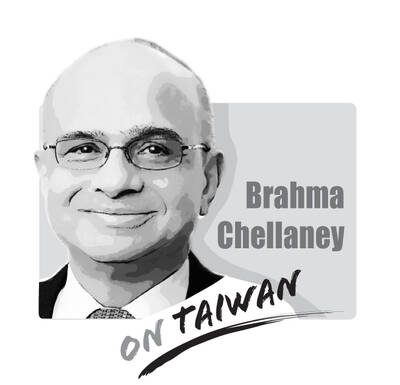As the World Health Assembly (WHA) once again shut its doors on Taiwan, Minister of Health and Welfare Chen Shih-chung (陳時中) filed an official complaint with the WHO expressing the nation’s outrage and dissatisfaction, signing the letter as “Republic of China Minister of Health and Welfare.”
Only by using the false title of “Taiwan, Province of China” would Taiwan obtain Beijing’s approval to attend the assembly as an observer. Other titles, such as “the Republic of China,” “the Republic of China (Taiwan)” or simply “Taiwan,” will only meet with strong opposition from China.
The issue at stake is that, in the face of Beijing’s obstruction, the title Taiwan uses will send different signals to other nations.
First, the title “Republic of China” is confused with “China” to the extent that an ally once played the Chinese national anthem at a ceremony to welcome Taiwan’s president.
The consensus shared by the world is that “China” is the abbreviation of “the People’s Republic of China,” so there is very little room left for “the Republic of China.”
Second, the title “Republic of China (Taiwan)” is even more confounding and hardly understandable even for Taiwanese, let alone to other nations.
Thus, it would be much clearer for Taiwan to speak to the WHO — and to the world — using the name “Taiwan.” Calling oneself by one’s own name should be nothing to be afraid of, and it will not inflict any additional damage.
The health ministers of the nation’s allies emphasized the importance of the “Taiwanese government’s and people’s” participation at the WHA. How would Chen translate that into Chinese: “the Taiwanese government and people,” “the government and people of the Republic of China” or “the government and people of the Republic of China (Taiwan)”?
Non-diplomatic allies, such as the US, New Zealand, Canada, Japan, Germany and Australia, also expressed their support, and mentioned “Taiwan” rather than using one of the other two titles.
On Dec. 2, 2016, then-US president-elect Donald Trump tweeted that “The President of Taiwan CALLED ME today to wish me congratulations on winning the Presidency. Thank you!” He did not mention Tsai Ing-wen (蔡英文) as “the President of the Republic of China” or “the President of the Republic of China (Taiwan).”
On Jan. 1, 1979, the US established diplomatic relations with China, and on April 10 that year, the Taiwan Relations Act — which aims to secure the safety of Taiwan and to maintain regional stability — was signed into law by then-US president Jimmy Carter.
In March, Trump signed the Taiwan Travel Act to facilitate mutual visits by high-ranking officials between the US and Taiwan.
In other words, two acts with the name “Taiwan” in their title can be found in the US, but there are none with the name “the Republic of China” or “the Republic of China (Taiwan).”
Evidently, no one in the international community speaks of “the Republic of China.” By contrast, there are still a few people in Taiwan who constantly force others to pay the utmost respect to that title. Curiously, these are the same people who dare not say “the Republic of China” when they visit China.
Chang Kuo-tsai is a former deputy secretary-general of the Taiwan Association of University Professors.
Translated by Chang Ho-ming.

Taiwan stands at the epicenter of a seismic shift that will determine the Indo-Pacific’s future security architecture. Whether deterrence prevails or collapses will reverberate far beyond the Taiwan Strait, fundamentally reshaping global power dynamics. The stakes could not be higher. Today, Taipei confronts an unprecedented convergence of threats from an increasingly muscular China that has intensified its multidimensional pressure campaign. Beijing’s strategy is comprehensive: military intimidation, diplomatic isolation, economic coercion, and sophisticated influence operations designed to fracture Taiwan’s democratic society from within. This challenge is magnified by Taiwan’s internal political divisions, which extend to fundamental questions about the island’s identity and future
Taiwan People’s Party (TPP) Chairman Huang Kuo-chang (黃國昌) is expected to be summoned by the Taipei City Police Department after a rally in Taipei on Saturday last week resulted in injuries to eight police officers. The Ministry of the Interior on Sunday said that police had collected evidence of obstruction of public officials and coercion by an estimated 1,000 “disorderly” demonstrators. The rally — led by Huang to mark one year since a raid by Taipei prosecutors on then-TPP chairman and former Taipei mayor Ko Wen-je (柯文哲) — might have contravened the Assembly and Parade Act (集會遊行法), as the organizers had
The narrative surrounding Indian Prime Minister Narendra Modi’s attendance at last week’s Shanghai Cooperation Organization (SCO) summit — where he held hands with Russian President Vladimir Putin and chatted amiably with Chinese President Xi Jinping (習近平) — was widely framed as a signal of Modi distancing himself from the US and edging closer to regional autocrats. It was depicted as Modi reacting to the levying of high US tariffs, burying the hatchet over border disputes with China, and heralding less engagement with the Quadrilateral Security dialogue (Quad) composed of the US, India, Japan and Australia. With Modi in China for the
The Chinese Nationalist Party (KMT) has postponed its chairperson candidate registration for two weeks, and so far, nine people have announced their intention to run for chairperson, the most on record, with more expected to announce their campaign in the final days. On the evening of Aug. 23, shortly after seven KMT lawmakers survived recall votes, KMT Chairman Eric Chu (朱立倫) announced he would step down and urged Taichung Mayor Lu Shiow-yen (盧秀燕) to step in and lead the party back to power. Lu immediately ruled herself out the following day, leaving the subject in question. In the days that followed, several